What is the best Continuous Improvement Software?
This seems like a really simple question. But the truth of the matter is that in terms of ‘what is the best continuous improvement software’, the question requires us to look at and review your current practices. If you want to be among the best in terms of improvement, you must learn from your current practices and ensure you improve your approach so that you match the delivery of the best companies and deliver user needs. The best continuous improvement software is going to help you improve your development practices and to help your team deliver lean improvements that deliver your company’s strategy.
On review, the best software for you depends on your current practices and also your aspirations as to where you wish to take your CI capabilities. You may just want to map processes better and faster to help you deliver or you may want to embed continuous improvement in your organisation and your culture. The best solution for you depends upon your strategy, what are you really trying to achieve? Are you trying to achieve CI in your organisation or do you just need to understand your processes better and understand the benefits of change?
This article is not about recommending a particular piece of software is more about understanding and identifying what your organisation might need to help it improve its performance and also to discover what challenges there are. We think continuous improvement is the best way to deliver real ongoing tangible savings. We think it helps to make the change process and continual improvement much easier.
Ultimately, all we are trying to is to deliver our company purpose and improve our services for our customers, so that we can deliver more effective changes to help deliver better services for our customers. Before you decide what, the best software is for you, you need to understand what best, good, better, quality, different, great or any other description really means to you in terms of outcomes and capabilities.
If you’re looking to map your processes better, the solution you need is very different to organisations who are looking to embed a continuous improvement culture across their organisation. Depending on where you are on that continuum will decide what sort of solution is best for you.
Your organisation approach matters too, you may be looking to deliver six sigma, you might be doing kaizen, you might apply lean, you might be agile, you might be delivering waterfall projects, might be called BPM, it might be called BPR, you might be doing CI or might be doing digital projects. Whatever your approach to improvement and whatever your current capability the best continuous improvement software is based on where you are right now and where you want to go.
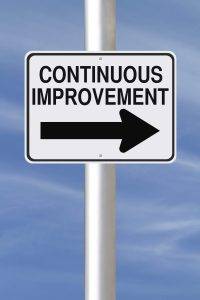
We all have different drivers for continuous improvement –
• Some organisations want to acquire or maintain iso accreditation
• Some just need it for other forms of compliance
• Some need to address budget challenges
• Some are trying to implement improvement projects or programmes
• Some want to create a continuous improvement culture
• Some are looking to create competitive advantage and deliver growth
• Some organisations need it to implement new software take advantage of the benefits
• Some organisations are trying to reorganise, implement new services or merge/move teams and/or roles
I would argue most organisations are trying to do at least one of those and there are many more drivers. I do think it’s important to consider your requirements and therefore the capabilities you need in your continuous improvement software to help support and deliver those outcomes. Often improvement teams do not have much investment in terms of tools and we think this is a risk considering the impact and importance of the work they are doing in terms of delivering your business plans.
There is no one right answer for everybody here, there are a set of questions you need to answer and things you need to think about. Depending on the answers to these, there is software features that can help you improve your performance and identify things can change to make your company better at identifying opportunities for improvement to services. In order to look at the best continuous improvement software we first have to understand what the user needs are that we are looking to help solve.
First, we have to look at the continuous improvement cycle. Before we look at the continuous improvement software tools, let’s first layout what we mean by the continuous improvement cycle.
Looking at the end to end process of delivering continuous improvement there are numerous stakeholders throughout the business who are involved in the end to end delivery of improvement. The continuous improvement software we chose must help us deliver value (ideally for all of those stakeholders) and remove waste from their processes.
This does make improvement management overall quite complex. That’s why it’s important to take into account the entire end-to-end improvement cycle when considering what the best continuous improvement software is for you. Overall, we believe continuous improvement software should be helping you implement a continuous improvement capability and culture within your entire organisation.

Who are the key stakeholders?
• Senior management team
• Project and programme management
• Business analysts or as we prefer to call them continuous service improvers
• Process owners
• Process actors
• Process users
• Developers
• Business management
• Trainers
• And so many more

What is the end to end continuous improvement life-cycle?
Ideation and project initiation
It is always difficult to decide where to start in a continuous cycle. By its very nature it is continuous but logically a good start-up point for us here is the initial idea or a project or programme requiring the improvement of one or more business processes.
Ideally your continuous improvement software should provide support to both the idea generation and the project management processes.
With project management processes there is almost always a key element of process improvement, delivering this in the best to the best quality can help improve this process and deliver more organisational benefits faster.
Idea generation and management is a key maturity step as you go further forward with continuous improvement and truly embedding a continuous improvement culture in your organisation. As such the functionality to deliver this within your continuous improvement software is a real value add feature for businesses looking to embed continuous improvement culture.
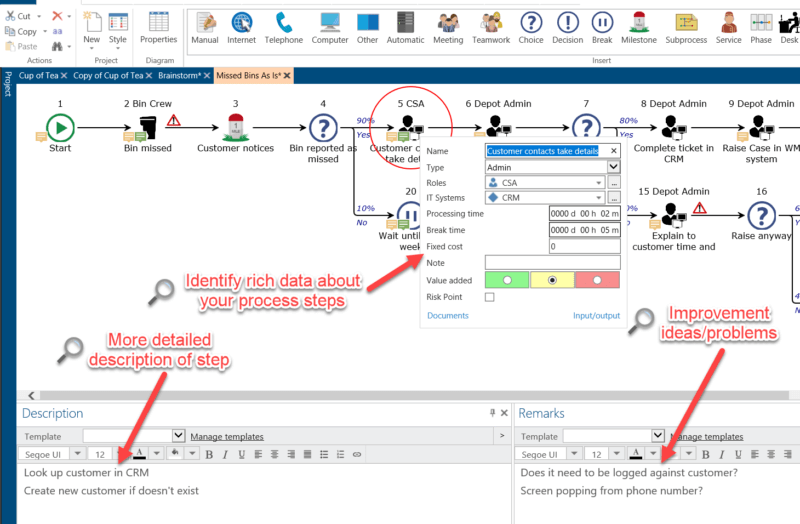
Process mapping (process understanding and visualisation)
This is the most visible part of the process and probably the one which most people are looking for when they are looking at continuous improvement software. There is a lot of waste in traditional methods of capturing processes. Traditionally we would capture processes with Post-it notes and brown paper, then we would look to transfer this information to a process mapping tool. This is a very time consuming and complex process and any software we should be considering must make this process easier for both your improvement teams but also and most importantly the people doing the processes or the process actors as we call them.
There are many different process mapping tools both free and paid for that can help you map a process but not necessarily in a way that helps you deliver value and benefits for your organisation. If you are looking to implement continuous improvement software you need to make sure the software helps you deliver this part of the continuous improvement cycle in a more efficient way.
It is critical at this point that the tools facilitate better to deliver this process. We need to be able to capture processes, to get everyone on the same page, to engage all the process actors in improvement, to be able to capture all information in one place and to make it easy for the stakeholders to understand and contribute to the outcomes.
As we mentioned before there are many solutions for creating process maps. For continuous improvement we want to capture more than just the map. We want to be able to capture the process flow at a level of detail that helps us build and identify solutions. We want to be able to capture the key metrics around the process, this helps us to understand the true cost of what we are currently doing but also any bottlenecks and problems within our current processes.
The best continuous improvement software is going to help you to be able to allow the people who are doing the work to be able to capture and understand their processes and identify real tangible improvements that can deliver benefits to the business. Continuous improvement software is going to give you more than just a picture or map of your process it is going to give you the intelligence needed to help you understand and redesign and continuously iterate your processes.
There are many users of this part of the continuous improvement cycle but we would see the critical users of this part of the process to be your business analysts or continuous service improvers, your process actors, your process owners, your project or product managers, your senior managers and your solution developers.
With the pace of technology change and capabilities in modern software solutions your process designs need to be delivered at a level that enables developers to build those bespoke solutions. The better your processes are captured; the less rework is required when building solutions which speeds up your overall continuous improvement development cycle.
At the end of process mapping phase you should have captured a map of your processes, a shared understanding of how they are working, ideas for improvement, have identified bottlenecks in the current processes, have understood the reasons for these, be able to understand the value delivered within your processes and most importantly understand how much they cost and how long your current processes take to deliver.
The outputs need to satisfy both the technical business analyst or continuous service improvers but also the business users who deliver the processes. They also need to support the process owners and senior managers who need to govern the delivery process and to decide on the on the projects and improvements and how they decide what commission and how to prioritise the various improvement projects.
Ideally your software should enable anyone in your organisation to be able to map and improve their processes. The best process mapping software enables you to capture processes live in your workshops removing the need for lengthy write-ups and the associated delays have a
look here . Transferring data from one system to another is always going to be waste activity and not delivering customer value or enabling you to deliver at pace.

Stakeholder engagement
Unless we are very lucky, we have just captured the processes with a small set of the process actors. If we want to ensure we have captured an accurate picture of the current process we need to share and gain engagement from wider process actor community. Understanding the current process is vital to be unable to improve it. To do that we need to make sure we engage everyone that works on the process.
Your continuous improvement software should enable you to do this better. It is not just about being able to create a process map but also about being able to engage everyone in understanding the way the current processes delivered.
Being able to share easy to understand process models really helps to engage everyone in continuous incremental improvements. To do this you need to have easy to understand process models and also be able to capture stakeholder feedback and engagement directly on those process maps.
Getting this wider engagement is vital to truly understanding the way current processes are delivered. Often there is only a very small subset of people who are able to actually attend the workshops. Ideally, we need to engage everybody who contributes to delivering the end-to-end process and the customer value.
So, your continuous improvement software isn’t just about capturing the processes but is about also being able to communicate and gain feedback on those processes. It shouldn’t be a skill that only business analysts understand, it needs to be a skill that is part of everyone’s job description in a modern agile organisation. The best companies use the best technology to deliver the best processes for their customers. The way they understand that is by allowing the people that deliver the work to continuously improve the processes they help to deliver.
Your software should make it easy to communicate and understand processes with all stakeholders. Needs to make it easy for business analysts or improvers to do their job but also for normal business users to be able to easily interpret and understand process maps and their data
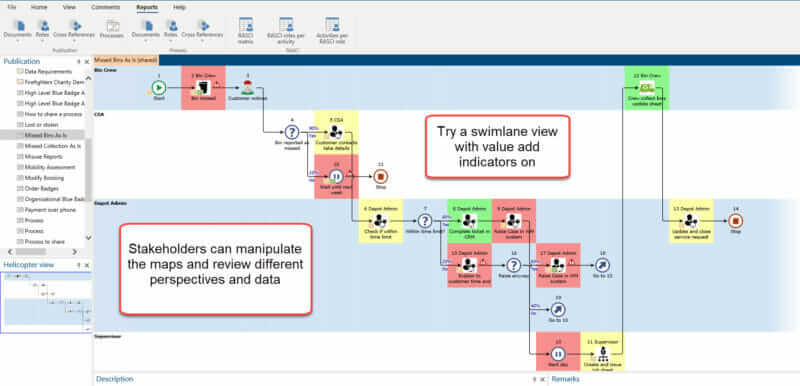
Process Analysis
The next logical step when you have captured and understood your existing processes is to be able to analyse them. In order to do this effectively you need to be able to view your processes from different perspectives such as an ICT swim lane or a roles swim lane. You need to be able to view all of your process data as well as the improvement ideas captured during the workshops. You want to be able to view the process and its value either to the customer, to the business or the waste contained within that process.
Depending on the approach of taking you might also want to be able to see the inputs and outputs. You want to be able to see the feedback received on the process from the wider stakeholder group. All of this data with traditional solutions is held in a multitude of places which makes it difficult to truly analyse your process.
One of the most important things you need to be able to understand is the times and costs related to the delivery of your current process. If you want to demonstrate savings you need to be able to benchmark your current performance. To do this you need to understand those costs and times. Traditional mapping tools offer vary little functionality in terms of calculation of costs and times. This process can be very manual and very time-consuming and subject to many changes and risks of errors.
The analysis function is critical to helping you understand the problems contained within your current process. In true continuous improvement software this function and feature set is provided within the software. One of the lessons I’ve learnt from many improvement projects is there even if you aren’t being asked at this point what are the benefits of change it is very likely that at some point in the future senior stakeholders will ask this question. I would argue it is always best practice no matter what projects or programmes or strategy we are looking to deliver that we should be basing our decisions on the benefits that can be delivered by those changes.
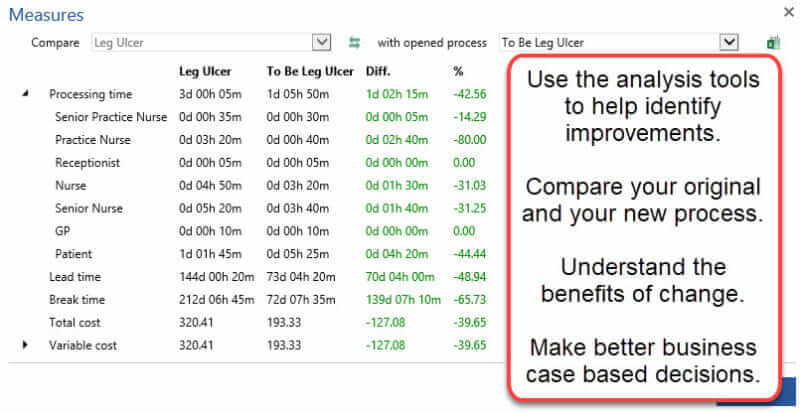
Process Improvement
Within the continuous improvement life-cycle we have now had an idea or project, this is kicked off process capture and understanding stage and through that process we now have a process model that we are able to analyse and identify potential ideas for improvement. Is best practice to have a governance process here following the capture and analysis of the As Is process. This is the point the decision-makers can review what has been learnt and agree to proceed or not with the next phase of process improvement. If the process is already optimised (which is unlikely) or the potential solutions cost more than the benefits justify, then the right answer here is to not proceed. At the very least (if resources are at all limited), the potential opportunities identified should be assessed against other potential improvements to look at which should be prioritised to best meet your organisations strategic objectives.
We can now take all of this combined knowledge and use it to create new models of service delivery and look at our options for improvement. We are using a lot of the same techniques as we used during the previous capture and analysis phases. This time we are using them to create a new process model to help us improve delivery.
Your continuous improvement software should help you to facilitate the improvement process. As before (in the capture phase), it helps if your software allows you to capture live in the workshops with the stakeholders present and them being able to see the visualisation process. This helps with engagement and ownership but it also helps obviously in terms of saving your business analysts or improvers significant amounts of time which mean they can spend more time delivering improvements and benefits.
As with the capture stage is vital to be able to collaborate on the outputs of this improvement workshops. You’ll be very unlikely that you would have all the stakeholders in the room the work on the current process. As with the earlier capture phase is essential to seek engagement and feedback from all stakeholders who are involved in the process. If you want to optimise your performance the best way to do it ensure your understanding of the as is and your definition of the to be are informed by the collective knowledge of all stakeholders. The more you truly understand, the better decisions you can make and the waste you can avoid. Engagement is critical to improving the quality of our continuous improvement interventions.
The key output of this part the process is at the very least model with the current process and at least one potential model for a fully redesigned service. The outputs need to have the right detail to allow the senior stakeholders to understand the proposed changes and to decide whether and when to commission them. To do that they going to need to understand the data relating to the current process as well as the data relating to your proposed changes or options. When the understand this, they understand both the costs and benefits of change.
Improvement is critical to this whole process (the clue is in the name) and as such this is an extremely critical component of the end to end process life-cycle. Your continuous improvement software really needs to excel in this area. If it doesn’t do this well and the outputs don’t meet your needs, then you really shouldn’t consider changing your continuous improvement software.
Governance
The next stage of the continuous improvement cycle is a government stage. Governance comes in many stages of the process but this is the first in terms of the way we have laid out continuous improvement cycle. At this point we have had an idea or an improvement project and we have understood our current process, how long it takes us, how much it costs us, what problems we have, what impact they have, how much it costs us, how long it takes us and what improvement ideas we have.
By understanding all of this, we should be able to decide what the best things are that we can implement. We need to be able to do more of the right things better than the wrong things better. Understanding the costs and benefits make this decision-making process easier. If we don’t just have a pretty picture of the process but we have the fully costed process model, with all of the other data attached to that model, we can make better decisions.
The first decision-making process we have in the continuous improvement cycle is to decide whether we proceed with improving this process. Occasionally there are processes that we analyse that can’t be improved (this is very rare with technology currently available). If this is the case it’s much better to not do that project and to focus our scarce resources on other projects that deliver far more business value.
The only way we can really assess this is a cost benefit analysis. What are the benefits of delivering these improvements and what are the costs and may be times to implement the process changes? We possibly also need to consider how big a change this is and how difficult it is to implement.
Only when we look at our improvement projects from this objective perspective can we ensure that we are doing the best possible things we can to improve our company’s performance.
Stakeholder engagement is vital to the process at many stages. This is the first stage comes into the continuous improvement cycle. It comes in many other stages and it helps us avoid huge amounts of wastage later in the process in terms of delivery. If you can engage all stakeholders and give them ownership and buying to the changes you can avoid massive amounts of wastage in terms of project resource and rework.
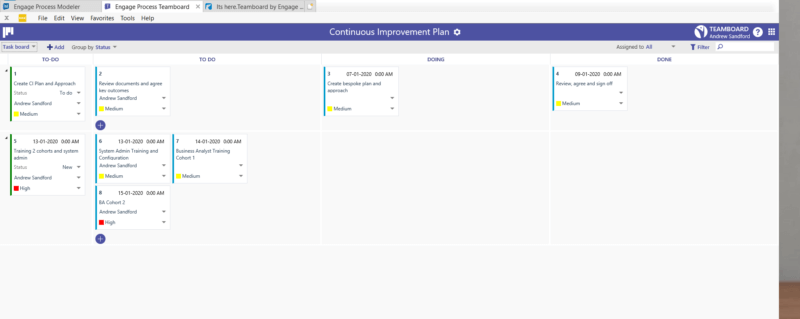
Project and programme management
Any software product at least needs to support your project and programme management processes. Obviously as they are governance processes, they also have similar requirements to the above.
For top quadrant performance CI software ideally, you are looking for some features that can help to add value in terms of project and programme management not just to provide support. Things like Kanban boards or other project management tools would be really helpful features within the software.

Benefits Management
Capturing of benefits is one of the weaknesses of traditional process mapping tools. Often the capture and understanding of the benefits is done outside of your process mapping software. It is normally manual calculation which is quite complex and time consuming to do. Recalculation of benefits when processes change again is complex and time-consuming. Have a
look here at the importance of capturing benefits.
As you will be aware processes and process definitions change frequently throughout the improvement cycle from the identification through to the delivery of change. Having manual or even worse no calculation of benefits is very detrimental to your projects.
A real top end continuous improvement tool will provide calculation and analysis of the benefits of change. Having this helps to support all of the governance processes as well as your project and programme management and your strategic outcomes.
By understanding the benefits of change you can ensure that you are doing the right things at the right times and delivering the most benefits for your organisation.
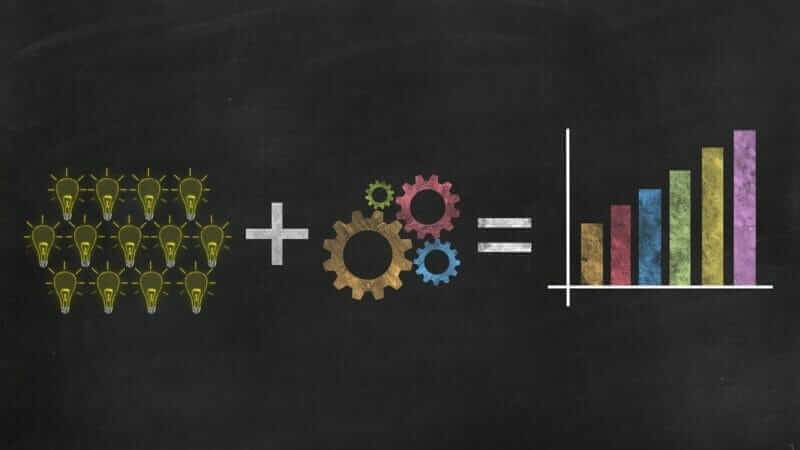
Change delivery
Delivery of the change is a very important stage to consider. Up until now the exercise has been a theoretical one, problems have been identified and solutions defined but as of yet no solutions have been deployed. Often this stage will involve some development work involving ICT (but not always) to actually build solutions. It is hugely likely during this process that there will be further changes that are necessary either by design or by features and functionality of potential solutions.
Your continuous improvement software should help you to create a specification for the work that is required to deliver the solutions. The information you’ve already captured during this process is precisely the information that is required by the development teams to start to create the solutions. If you have captured the processes at the right level of detail already the specification for developers should be easy, there is no reason why exactly the same process designs you’ve already used for the earlier stages cannot be reused as a specification for developers. Because you have all the information captured this process should be really easy. With traditional tools where the information is all in different places this normally means creating a separate document as a specification for the work.
Being able to use exactly the same diagrams and models does save significant amounts of time not collating the data and transferring it into another different medium. It is really important to ensure that the maps and models are updated as changes are considered and made. All the time the business case and the benefits should be revised as changes are being considered. From experience even potentially small change to process can have major implications to benefits and to the overall outcomes for customers. As the changes are going through the delivery part of the project these frequent changes are often not reflected back into the original maps and models. This is a common reason why your process maps and models are out of date even before you implement a single change.
With technology enable change we are always going to have elements of our processes we cannot implement in the way we would like right now. In order to ensure the benefits and outcomes are still delivered it is vital we consider the impact of these changes to ensure the changes are still viable and justify the cost of implementation. Good governance here is important to help support this process and to manage and challenge change. If your maps and models are kept up-to-date then the next phase of implementation becomes easier as the solutions that will be delivered are understood and mapped and those maps and models can now be used to help support the implementation.
Implementation
During the implementation stage the focus shifts to engagement and training. As with the previous phase having the up to date maps and models provides a great resource to help manage this transition phase. Your maps and models will form the basis of any engagement work you are doing with the business to prepare them imminent change (bear in mind there could have been a fairly significant time lapse between identifying the improvements and delivering the change capability).
Implementation is a phase is often subject to many delays and difficulties in projects and programmes. Normally this is due to a lack of engagement or buy in of the stakeholders or the need for changes to the new processes based on issues identified by stakeholders at this late stage either in the testing and engagement phase or much worse, post implementation which then requires rapid rework or a full rollback. Delays and changes at this stage of the process can have major impacts in terms of time, cost, reputation and benefits.
If you have the best continuous improvement software you have already applied the right approach to delivering continuous improvement it is very likely you can avoid or at least greatly reduce the impact felt at this stage due to quality issues. The stakeholders will already have been engaged in defining the changes and as such will have buy in to those changes reducing the risk of resistance at this late stage. Any delays felt at this stage effectively will have double impact on your delivery teams. Not only will it delay this individual project but it will also stop your delivery teams from being able to move on to the next project. Effectively this then means delays in realising benefits in project one and project two, potentially also a reduction in benefits based on the changes and issues now being identified.
It is very unlikely that projects would get stopped at this stage as the amount of work that has gone into this to get this far is substantial. It does mean though that benefits realisation can be impacted and that the overall business case will be weakened. Problems at this stage are by their very nature amplified by the sheer amount of effort that has gone in and the fact that the identified issues may cause you to have to go all the way back to the start of the process all over again. Any work we can do to reduce and avoid rework at this stage has huge benefits to the organisation overall.
Knowledge management
The penultimate section here is one we have badged as knowledge management. Throughout the process you been capturing data and if you look at your current way of delivering improvement and the current software that is used is very likely you have multiple sources of data to contend with as well as needing to keep them all in sync. From the original post it’s to some sort of process map, some calculations, some notes maybe in word, emails, reports, presentations and maybe even other systems. With traditional continuous improvement systems, you may handle a couple of the key elements which will still require you to be transferring data and maintaining versions which are waste activities.
Your continuous improvement software should enable you to handle this process much better. If you can handle it better you can improve your overall quality which will improve your overall delivery outcomes. It is really important to understand this is a critical risk in the process. If your continuous improvement software does not make it easy to keep your processes up-to-date and to ensure you are looking at the right information then, you will either need to spend significantly more time on this waste activity or probably worse still you don’t spend that additional time and therefore your processes will become quickly out of date. This means that the next time you need to look at improving that process you are starting from scratch rather than the current delivered process.
The knowledge management element doesn’t end there either as we’ve already talked about the models support governance, project management, benefits management, change delivery and stakeholder engagement parts of the process as we need to access the correct current up-to-date data for these to work effectively. The next use of the outputs is to support business as usual post implementation of the change. We already talked about using it to support the training and the stakeholder engagement but when the process is live people still need to access the process information. If you have a new starter what better way to train them than to be able to show them model with your processes with all of the data and information to allow them to do their job. What about people in customer service they need to understand what goes on after they have helped customer so that they can explain processes to the customers how do they do that best?
To deliver this sort of functionality the best software enables you to publish an online process handbook. This allows all staff given the right permissions to access your process library for your entire organisation. This is a great tool for promoting good practice and allowing other parts of the organisation to learn from your improvements. Doing this is dependent on ensuring the information is kept up-to-date and valid.
A single source of process truth can really support continuous improvement in your organisation. How well does your current software and tools help you deliver this sort of functionality in an efficient and effective way?

Continual Improvement
Continual improvement is the key differentiator between process improvement and implementing a continuous improvement culture. We are in the part of the process now where we have been through a full lifecycle of improvement from the original idea through to delivery of a solution. Hopefully your continuous improvement software has helped you get there better and faster but now it is important to ensure that the cycle doesn’t end here. If you are delivering projects is very likely that this is the point at which the project stops and potentially there is a risk that the information and data captured could now be left to go out of date if it isn’t already.
During the project it is very likely that the owners of all of the assets and data are the project team, if you are looking to be able to implement continuous improvement then the ownership of the assets and the responsibility for maintaining them needs to move to the process owners and the people doing the work. In an ideal world the real ownership would have been with the process owners throughout the project and it might well have been. If it isn’t now at this point it does need to be transitioned to the process owners.
Because of this there is a need for your continuous improvement software to be able to support users who are not trained business analysts to be able to continuously improve their processes. The implementation of an improvement is just the next step in the continual improvement value stream. The next step in the best organisations is the to generate and capture the ideas for the next. There is a huge amount of value from a cultural perspective to be derived from ensuring this happens.
To help support this process you need your continuous improvement software to help capture and respond to improvement ideas. Those ideas will help you continuously improve what you do and also to engage those who are working on the processes. It’s really important to have effective procedures in place to deal with these improvement ideas also. Your ideas should help kick off the next iteration of the process where you revisit the improved process and look to improve it again with what you have learnt.
The process owners need to be able to be able to capture those ideas and apply them to the process in order to redesign and achieve more benefits. It is very unlikely you would have process resources available to facilitate this, even if you do, it is better from a buy in perspective that the people who are doing the work feel ownership of the improvement and proposed changes. If this happens and the appropriate analysis has also taken place when ideas are proposed into your delivery programme, they are of a much better quality than if the appropriate understanding and analysis has not happened.
This process should also help identify any areas where there are potential solutions that can add value to the process. If you are receiving this kind of quality discovery outputs from many different service areas across the organisation you will be able to understand trends across different systems and service areas. Having that kind of information helps you to be able to make better decisions about what solutions you need to buy and what types of features and requirements they need. This means you can procure solutions based on real and identified tangible benefits.
The continuous improvement software should also help you deliver faster as well as to a higher quality. This means you can get more improvement and less waste. Your software should make it far easier for anybody to be improving processes and as such this can enable you to embed the continuous improvement culture in your entire organisation. The right software can help you have more people doing more improvements at a higher quality which will deliver better outcomes for the organisation. Consistently doing this will help raise confidence in your organisation that the continuous improvement approach can help you to deliver your organisational outcomes.
Summary-What is the best continuous improvement software for you?
There are many different options available and our advice would be to follow the same advice we would for any software purchase. Before you purchase the software, you need to understand who the stakeholders are and most importantly what you are trying to achieve with the software. You need to understand the problems your organisation has in its current continuous improvement processes and to use those to help define the requirements for your new software.
There are many different stakeholders and many different challenges that you can address with continuous improvement so it’s well worth taking some time to understand what you are trying to achieve and what the user needs are for all those diverse stakeholders.
There are many different options available for continuous improvement software solutions dealing with everything from the process capture right through to the continuous capture of ideas. Depending on what you are trying to achieve there may be many different options available for you. There are many different solutions which range from free mapping tools to paid mapping tools but also solutions that handle a larger proportion and sometimes even all of the continuous improvement life-cycle.
Key elements you need to consider when looking for software is which of these
elements are important your organisation:
• Ideation and project initiation
• Process mapping (process understanding and visualization)
• Stakeholder engagement
• Process Analysis
• Process Improvement
• Governance
• Project and programme management
• Benefits Management
• Change delivery
• Implementation
• Knowledge management
• Continual Improvement
Getting this right will help you deliver better and faster. The best software can help you is worth taking time to work out what that is and what your specific requirements are. We believe continuous improvement to be the only strategy you need to succeed in the modern world.
Why not make improvement easier for you?
If you are looking for one of the best continuous improvement software’s have a look at more of our website.
If you are looking for just some
process mapping tools both paid and free have a look at these articles:
7 FREE Flowchart and Diagram Apps
Best flowchart software of 2020: mind maps and diagram apps
The Best Flowchart Software Of 2019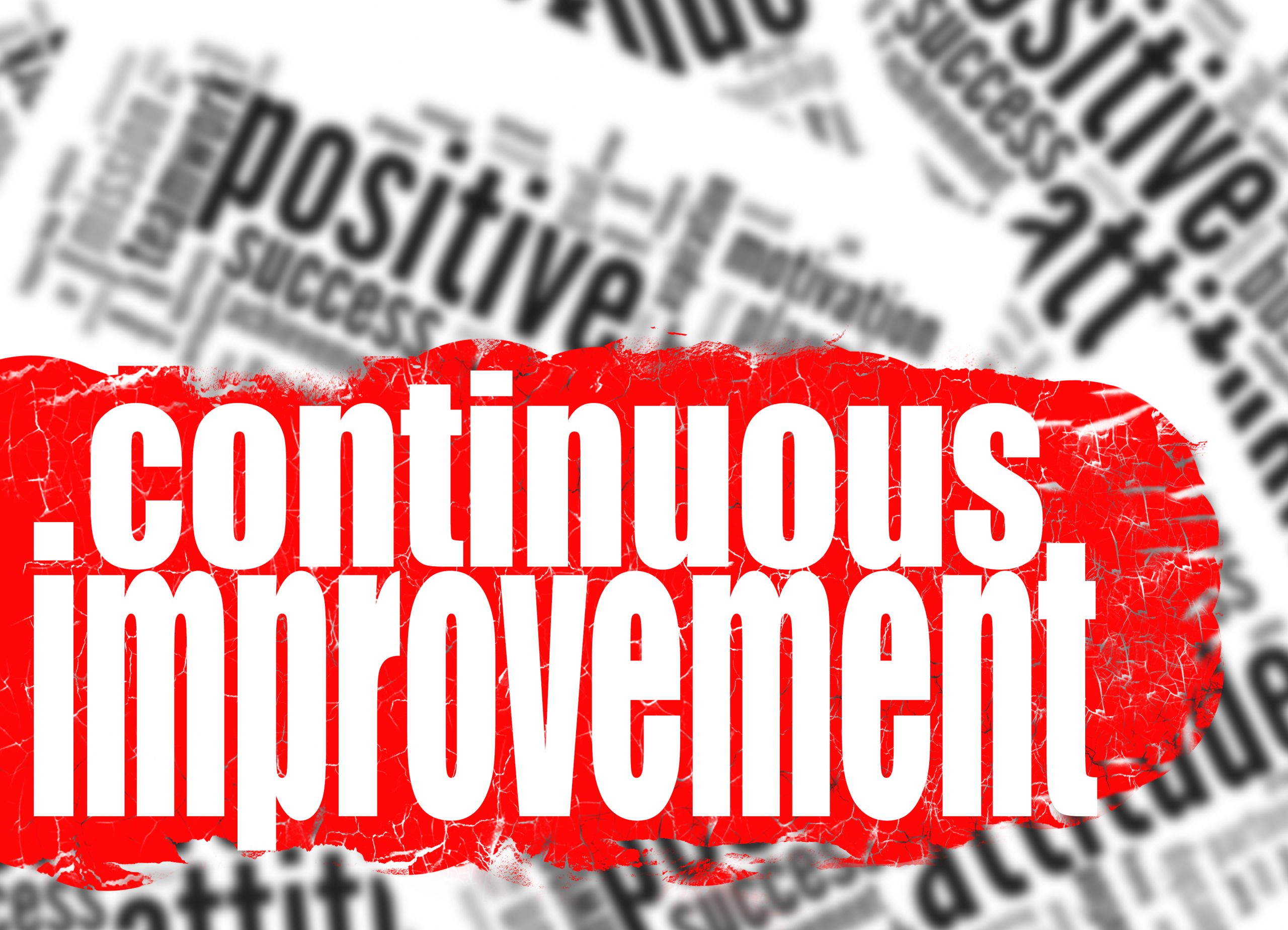
 We all have different drivers for continuous improvement –
• Some organisations want to acquire or maintain iso accreditation
• Some just need it for other forms of compliance
• Some need to address budget challenges
• Some are trying to implement improvement projects or programmes
• Some want to create a continuous improvement culture
• Some are looking to create competitive advantage and deliver growth
• Some organisations need it to implement new software take advantage of the benefits
• Some organisations are trying to reorganise, implement new services or merge/move teams and/or roles
I would argue most organisations are trying to do at least one of those and there are many more drivers. I do think it’s important to consider your requirements and therefore the capabilities you need in your continuous improvement software to help support and deliver those outcomes. Often improvement teams do not have much investment in terms of tools and we think this is a risk considering the impact and importance of the work they are doing in terms of delivering your business plans.
There is no one right answer for everybody here, there are a set of questions you need to answer and things you need to think about. Depending on the answers to these, there is software features that can help you improve your performance and identify things can change to make your company better at identifying opportunities for improvement to services. In order to look at the best continuous improvement software we first have to understand what the user needs are that we are looking to help solve.
First, we have to look at the continuous improvement cycle. Before we look at the continuous improvement software tools, let’s first layout what we mean by the continuous improvement cycle.
Looking at the end to end process of delivering continuous improvement there are numerous stakeholders throughout the business who are involved in the end to end delivery of improvement. The continuous improvement software we chose must help us deliver value (ideally for all of those stakeholders) and remove waste from their processes.
This does make improvement management overall quite complex. That’s why it’s important to take into account the entire end-to-end improvement cycle when considering what the best continuous improvement software is for you. Overall, we believe continuous improvement software should be helping you implement a continuous improvement capability and culture within your entire organisation.
We all have different drivers for continuous improvement –
• Some organisations want to acquire or maintain iso accreditation
• Some just need it for other forms of compliance
• Some need to address budget challenges
• Some are trying to implement improvement projects or programmes
• Some want to create a continuous improvement culture
• Some are looking to create competitive advantage and deliver growth
• Some organisations need it to implement new software take advantage of the benefits
• Some organisations are trying to reorganise, implement new services or merge/move teams and/or roles
I would argue most organisations are trying to do at least one of those and there are many more drivers. I do think it’s important to consider your requirements and therefore the capabilities you need in your continuous improvement software to help support and deliver those outcomes. Often improvement teams do not have much investment in terms of tools and we think this is a risk considering the impact and importance of the work they are doing in terms of delivering your business plans.
There is no one right answer for everybody here, there are a set of questions you need to answer and things you need to think about. Depending on the answers to these, there is software features that can help you improve your performance and identify things can change to make your company better at identifying opportunities for improvement to services. In order to look at the best continuous improvement software we first have to understand what the user needs are that we are looking to help solve.
First, we have to look at the continuous improvement cycle. Before we look at the continuous improvement software tools, let’s first layout what we mean by the continuous improvement cycle.
Looking at the end to end process of delivering continuous improvement there are numerous stakeholders throughout the business who are involved in the end to end delivery of improvement. The continuous improvement software we chose must help us deliver value (ideally for all of those stakeholders) and remove waste from their processes.
This does make improvement management overall quite complex. That’s why it’s important to take into account the entire end-to-end improvement cycle when considering what the best continuous improvement software is for you. Overall, we believe continuous improvement software should be helping you implement a continuous improvement capability and culture within your entire organisation.
 Who are the key stakeholders?
• Senior management team
• Project and programme management
• Business analysts or as we prefer to call them continuous service improvers
• Process owners
• Process actors
• Process users
• Developers
• Business management
• Trainers
• And so many more
Who are the key stakeholders?
• Senior management team
• Project and programme management
• Business analysts or as we prefer to call them continuous service improvers
• Process owners
• Process actors
• Process users
• Developers
• Business management
• Trainers
• And so many more








 Continual Improvement
Continual improvement is the key differentiator between process improvement and implementing a continuous improvement culture. We are in the part of the process now where we have been through a full lifecycle of improvement from the original idea through to delivery of a solution. Hopefully your continuous improvement software has helped you get there better and faster but now it is important to ensure that the cycle doesn’t end here. If you are delivering projects is very likely that this is the point at which the project stops and potentially there is a risk that the information and data captured could now be left to go out of date if it isn’t already.
During the project it is very likely that the owners of all of the assets and data are the project team, if you are looking to be able to implement continuous improvement then the ownership of the assets and the responsibility for maintaining them needs to move to the process owners and the people doing the work. In an ideal world the real ownership would have been with the process owners throughout the project and it might well have been. If it isn’t now at this point it does need to be transitioned to the process owners.
Because of this there is a need for your continuous improvement software to be able to support users who are not trained business analysts to be able to continuously improve their processes. The implementation of an improvement is just the next step in the continual improvement value stream. The next step in the best organisations is the to generate and capture the ideas for the next. There is a huge amount of value from a cultural perspective to be derived from ensuring this happens.
To help support this process you need your continuous improvement software to help capture and respond to improvement ideas. Those ideas will help you continuously improve what you do and also to engage those who are working on the processes. It’s really important to have effective procedures in place to deal with these improvement ideas also. Your ideas should help kick off the next iteration of the process where you revisit the improved process and look to improve it again with what you have learnt.
The process owners need to be able to be able to capture those ideas and apply them to the process in order to redesign and achieve more benefits. It is very unlikely you would have process resources available to facilitate this, even if you do, it is better from a buy in perspective that the people who are doing the work feel ownership of the improvement and proposed changes. If this happens and the appropriate analysis has also taken place when ideas are proposed into your delivery programme, they are of a much better quality than if the appropriate understanding and analysis has not happened.
This process should also help identify any areas where there are potential solutions that can add value to the process. If you are receiving this kind of quality discovery outputs from many different service areas across the organisation you will be able to understand trends across different systems and service areas. Having that kind of information helps you to be able to make better decisions about what solutions you need to buy and what types of features and requirements they need. This means you can procure solutions based on real and identified tangible benefits.
The continuous improvement software should also help you deliver faster as well as to a higher quality. This means you can get more improvement and less waste. Your software should make it far easier for anybody to be improving processes and as such this can enable you to embed the continuous improvement culture in your entire organisation. The right software can help you have more people doing more improvements at a higher quality which will deliver better outcomes for the organisation. Consistently doing this will help raise confidence in your organisation that the continuous improvement approach can help you to deliver your organisational outcomes.
Continual Improvement
Continual improvement is the key differentiator between process improvement and implementing a continuous improvement culture. We are in the part of the process now where we have been through a full lifecycle of improvement from the original idea through to delivery of a solution. Hopefully your continuous improvement software has helped you get there better and faster but now it is important to ensure that the cycle doesn’t end here. If you are delivering projects is very likely that this is the point at which the project stops and potentially there is a risk that the information and data captured could now be left to go out of date if it isn’t already.
During the project it is very likely that the owners of all of the assets and data are the project team, if you are looking to be able to implement continuous improvement then the ownership of the assets and the responsibility for maintaining them needs to move to the process owners and the people doing the work. In an ideal world the real ownership would have been with the process owners throughout the project and it might well have been. If it isn’t now at this point it does need to be transitioned to the process owners.
Because of this there is a need for your continuous improvement software to be able to support users who are not trained business analysts to be able to continuously improve their processes. The implementation of an improvement is just the next step in the continual improvement value stream. The next step in the best organisations is the to generate and capture the ideas for the next. There is a huge amount of value from a cultural perspective to be derived from ensuring this happens.
To help support this process you need your continuous improvement software to help capture and respond to improvement ideas. Those ideas will help you continuously improve what you do and also to engage those who are working on the processes. It’s really important to have effective procedures in place to deal with these improvement ideas also. Your ideas should help kick off the next iteration of the process where you revisit the improved process and look to improve it again with what you have learnt.
The process owners need to be able to be able to capture those ideas and apply them to the process in order to redesign and achieve more benefits. It is very unlikely you would have process resources available to facilitate this, even if you do, it is better from a buy in perspective that the people who are doing the work feel ownership of the improvement and proposed changes. If this happens and the appropriate analysis has also taken place when ideas are proposed into your delivery programme, they are of a much better quality than if the appropriate understanding and analysis has not happened.
This process should also help identify any areas where there are potential solutions that can add value to the process. If you are receiving this kind of quality discovery outputs from many different service areas across the organisation you will be able to understand trends across different systems and service areas. Having that kind of information helps you to be able to make better decisions about what solutions you need to buy and what types of features and requirements they need. This means you can procure solutions based on real and identified tangible benefits.
The continuous improvement software should also help you deliver faster as well as to a higher quality. This means you can get more improvement and less waste. Your software should make it far easier for anybody to be improving processes and as such this can enable you to embed the continuous improvement culture in your entire organisation. The right software can help you have more people doing more improvements at a higher quality which will deliver better outcomes for the organisation. Consistently doing this will help raise confidence in your organisation that the continuous improvement approach can help you to deliver your organisational outcomes.
